Dream cars: outlandish concepts and visionary ideas from the past go on show in Atlanta
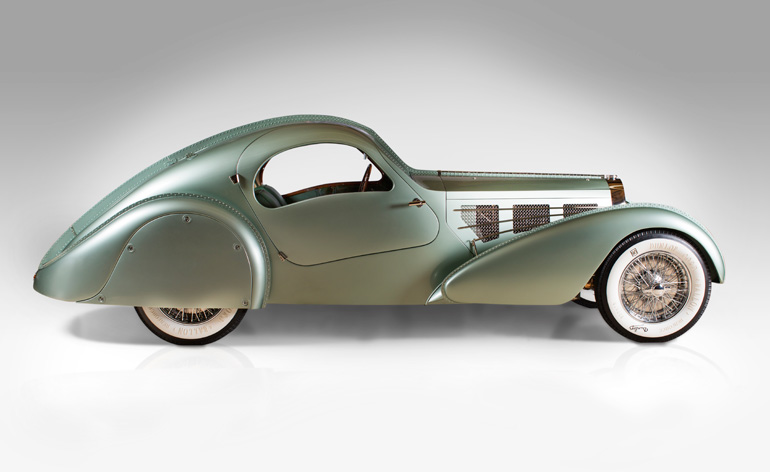
Dream Cars, the new show at the Atlanta High Museum of Art, encapsulates our ongoing fascination with retro futurism. Auto shows are always good for visitor numbers, and Dream Cars (opening on 21 May) adds an additional slice of yearning nostalgia, offering up a choice selection of 17 of the most weird and wonderful conceptual car designs that (mostly) never made it into the real world.
As well as the big names of contemporary car culture - including Ferrari, Bugatti and Porsche - the exhibition focuses on far-sighted one-off visions, the ideas that were just too way-out for popular taste or technological ability. Including models, drawings, patents and beautiful period artwork, alongside 17 mint condition cars, the show harks back to an earlier age, when the 'dream car' was exactly that - a piece of elaborate speculative design intended to inspire. Most of today's concepts are far more grounded; we want to buy what we see so car companies are careful to use design studies as a way of previewing next year's model or foreshadowing a future design direction.
Just occasionally, the willpower, drive and investment exists to translate a vision into reality. The Porsche 918 Spyder Concept, shown here, is a good example of the vast expense of being first; you can buy the production version of this hybrid supercar, but it'll cost you over £650,000. Most of the other exhibits are priceless one-offs, either designed before their time or never intended to turn a wheel on the public road. Instead, they've been brought together to remind us of how the future used to look.

Stout Scarab, 1936, designed by William B Stout. Just nine examples of this proto-people mover - a veritable outlier in terms of form and function - were built, featuring an all-enveloping Art Deco body and rear-mounted engine.

L'Oeuf électrique, 1942, designed and fabricated by Paul Arzens. The only example of Arzens' 'electric egg' usually resides in Paris's Musée des Arts et Métiers. The French industrial designer is best known for shaping the country's trains, but this tiny electric car was built for his own personal use. Photography: Michel Zumbrunn and Urs Schmid
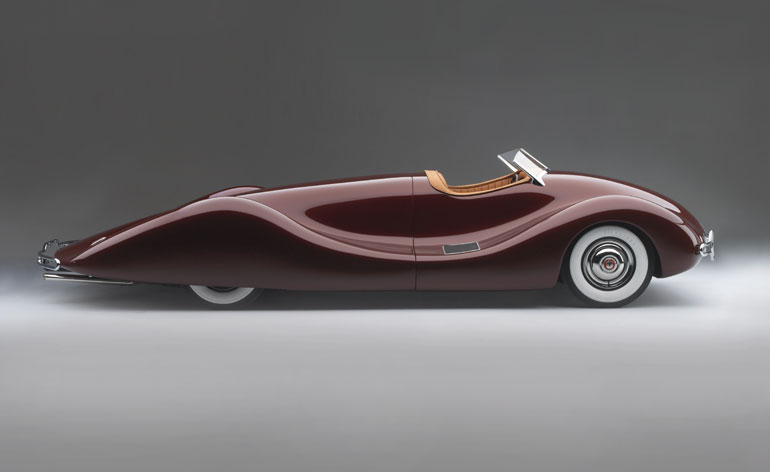
Norman Timbs Special, 1947, designed by Norman Timbs at the height of the streamlining craze and influenced by pre-war German racing cars. The entire rear-section opens upwards to reveal a spare wheel and fuel tank.
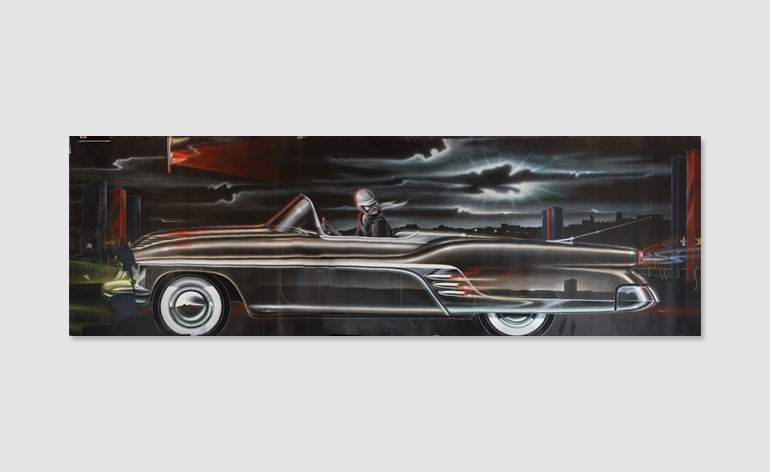
Cadillac Convertible Concept Car, 1951, designed by Carl Renner. A former Disney animator, Renner rose through the GM ranks to become one of the key designers on the iconic Chevrolet Corvette, creating many concepts along the way.
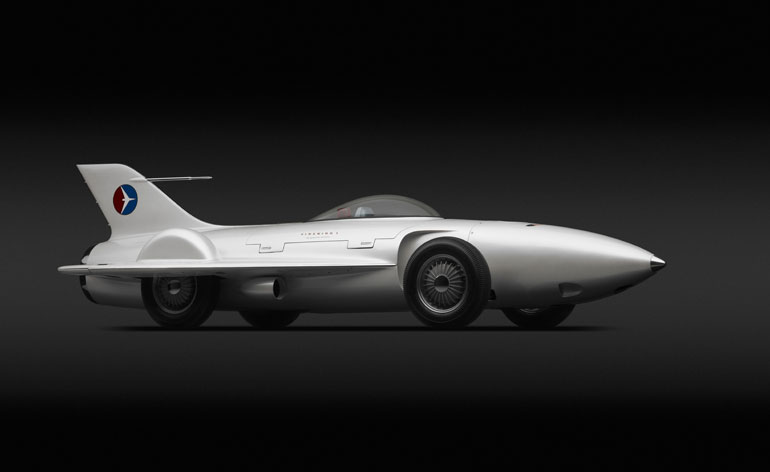
General Motors Firebird I XP-21, 1953, designed by Harley J Earl, Robert F 'Bob' McLean, and GM Styling Section staff. GM's trio of Firebird concept cars defined the 50s obsession with aeronautical styling and technology. The Firebird I shown here was the most extreme, a turbine-powered single seater that belched scalding exhaust gas and was scarcely controllable at speed. Earl, more than any other stylist, knew how to translate the exotic forms of the dream cars into elaborately detailed production cars.
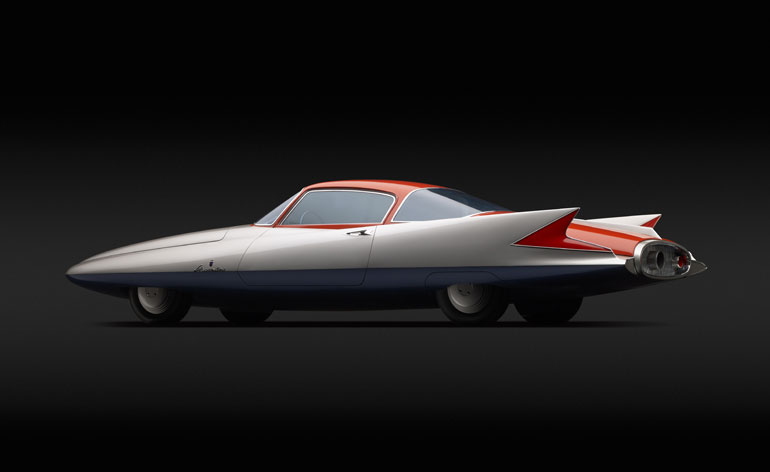
Chrysler (Ghia) Streamline X 'Gilda,' 1955, designed by Giovanni Savonuzzi and Virgil Exner and christened after the 1946 Rita Hayworth film. Gilda was a gas turbine-powered concept, although one was only fitted during recent restoration; it's now noisy, unwieldy and undeniably shaped by the jet age.

Gyroscopically Stabilized Two-Wheel Car, ca. 1960, gouache on paper, by Syd Mead. Mead is the original futurist, a talented artist with a penchant for creating futuristic visions of tomorrow's transport - designs that have been featured in many major films.

'Runabout' Design Concept, ca. 1964, designed by Wayne Cherry. Cherry only retired a decade ago, after a long career at General Motors. As well as conceptual ideas like the Runabout - with its integrated shopping trolley - he was responsible for numerous production cars in the US and Europe
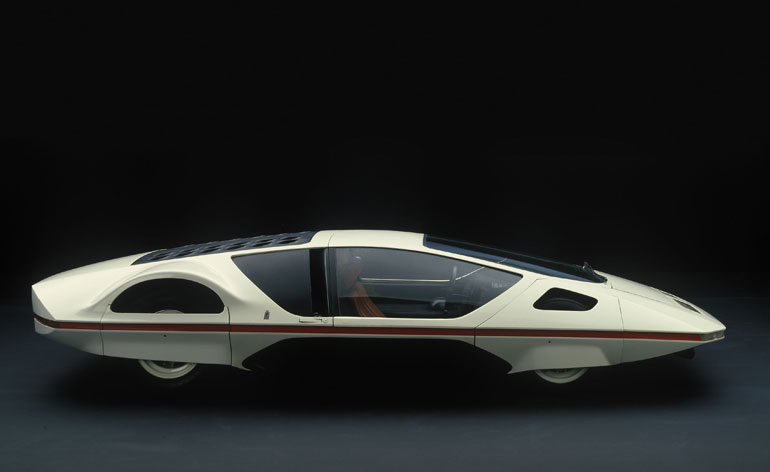
Ferrari (Pininfarina) 512 S Modulo, 1970, designed by Paolo Martin at Pininfarina. The Modulo was from the era of form over function. A real racing Ferrari lay beneath the outrageously low body, although the faired-in wheels seriously compromised practical use.

Lancia (Bertone) Stratos HF Zero, 1970, designed by Marcello Gandini as the most extreme manifestation of the 70s 'wedge'. One of the lowest cars ever created, the Zero is pure sculpture, accessed by the hinged windscreen and with no concessions to anything but form

BMW GINA Light Visionary Model, 2001, designed by Christopher Bangle, the company's influential former design director. GINA used fabric stretched tight over an underlying structure, giving the car the ability to 'transform' into different shapes
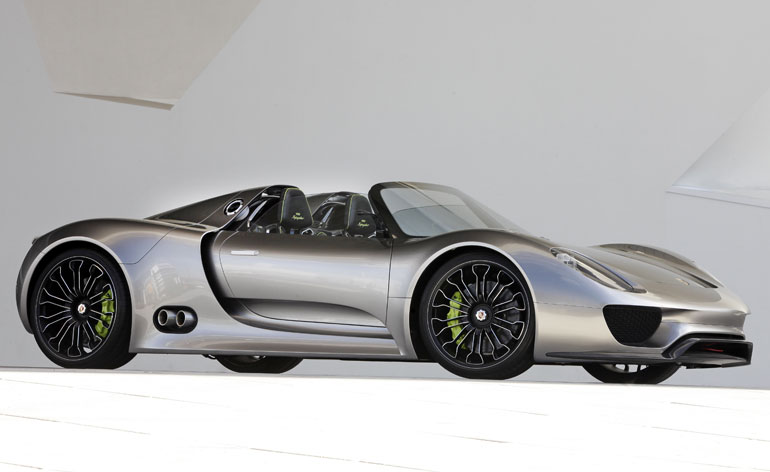
Porsche 918 Spyder Concept Car, 2010, designed by Michael Maurer and Porsche Design Studio. Now available as a production car, this hybrid showcase carried on Porsche's long-standing tradition of building advanced supercars as a way of exploring future technologies
ADDRESS
Atlanta High Museum of Art
1280 Peachtree Street
NE Atlanta, GA 30309
USA
Receive our daily digest of inspiration, escapism and design stories from around the world direct to your inbox.
Jonathan Bell has written for Wallpaper* magazine since 1999, covering everything from architecture and transport design to books, tech and graphic design. He is now the magazine’s Transport and Technology Editor. Jonathan has written and edited 15 books, including Concept Car Design, 21st Century House, and The New Modern House. He is also the host of Wallpaper’s first podcast.
-
 Eclectic and colourful, Charlie Ferrer’s home reflects the interior designer’s personal and professional evolution
Eclectic and colourful, Charlie Ferrer’s home reflects the interior designer’s personal and professional evolutionThe New York interior designer invites us into his new Greenwich Village home: come on in
-
 Heading to the 2026 Winter Olympic Games? Don’t miss these stops along the way
Heading to the 2026 Winter Olympic Games? Don’t miss these stops along the wayAs the anticipated winter games draw near, Wallpaper*’s Milan editor, Laura May Todd, shares where to stay, eat, drink and relax in the Dolomites
-
 Step inside this resilient, river-facing cabin for a life with ‘less stuff’
Step inside this resilient, river-facing cabin for a life with ‘less stuff’A tough little cabin designed by architects Wittman Estes, with a big view of the Pacific Northwest's Wenatchee River, is the perfect cosy retreat
-
 Peugeot’s sparky 308 gets hybrid power and handsome lines
Peugeot’s sparky 308 gets hybrid power and handsome linesThe Peugeot 308 proves that mass-market design needn’t be dull, blending hybrid power with sharp lines and excellent detailing
-
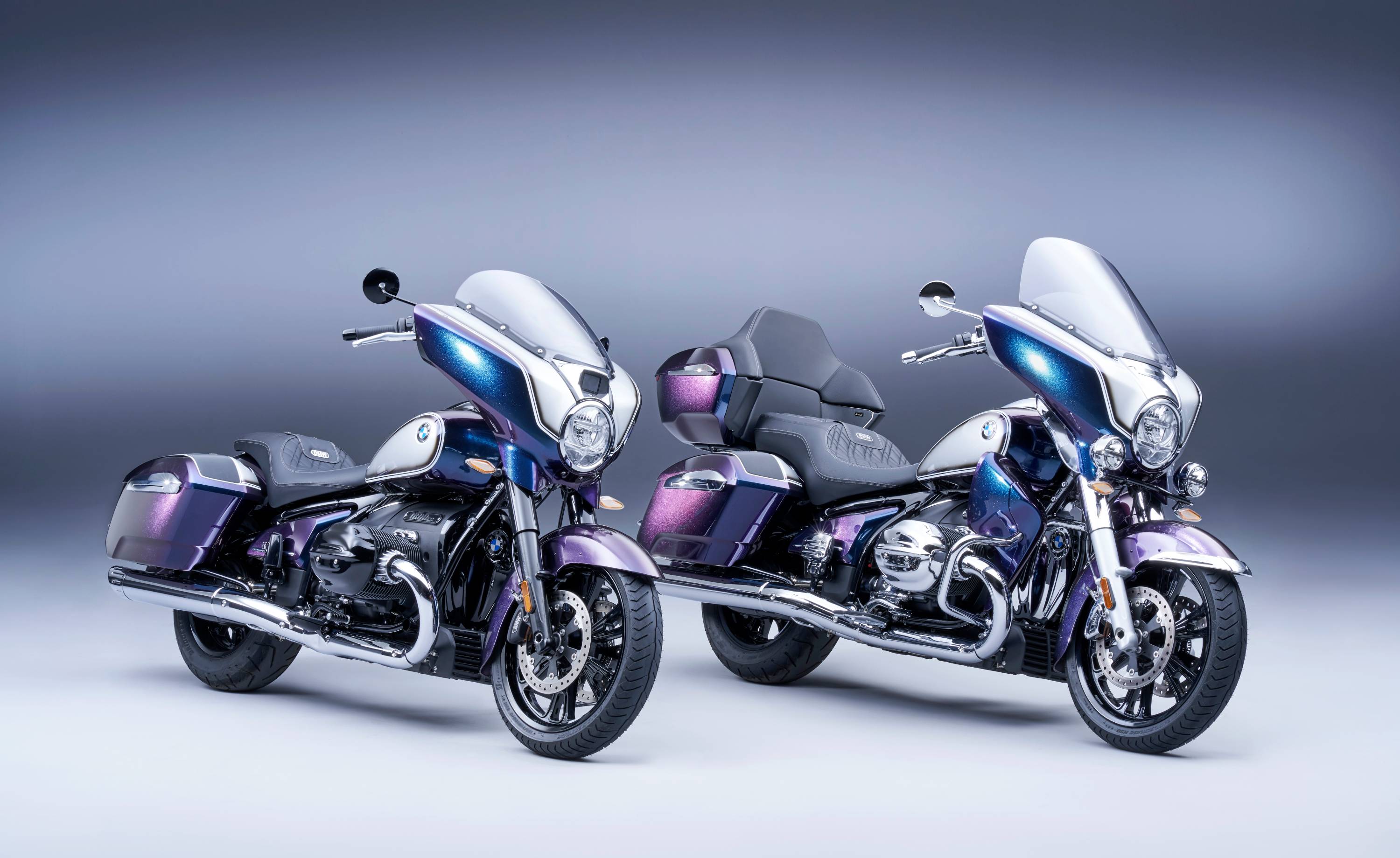 BMW Motorrad brings out the big guns for its newest cruisers
BMW Motorrad brings out the big guns for its newest cruisersBMW Motorrad R 18 Bagger and Transcontinental set the tone for high-voltage cruising with a brand collaboration with speaker specialist Marshall
-
 Dacia’s new Manifesto concept is a true outdoor utility vehicle
Dacia’s new Manifesto concept is a true outdoor utility vehicleUtilitarian auto brand Dacia sets a bold new agenda with its Manifesto, a concept car pitched at the active outdoor market
-
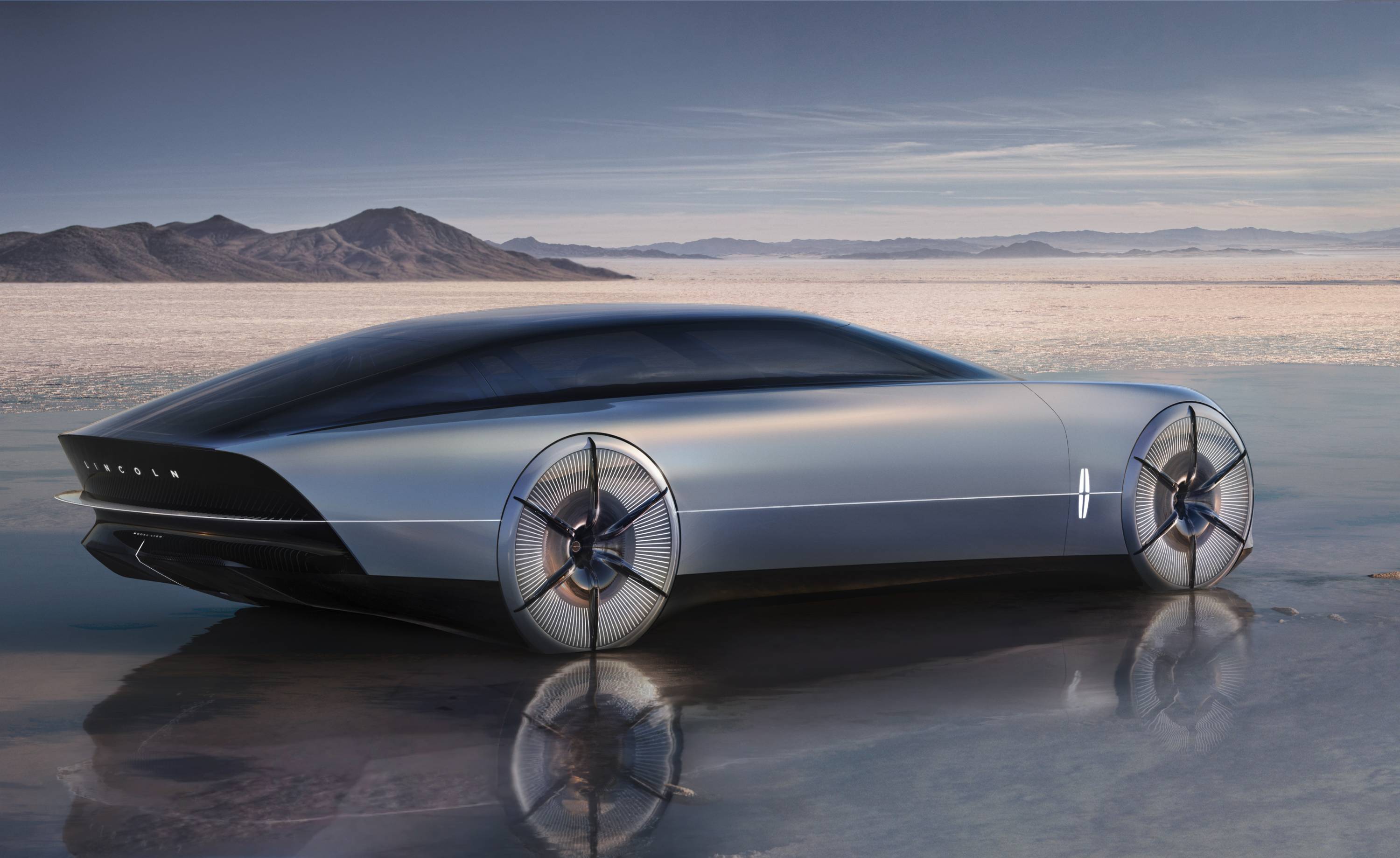 The sun sets on traditional supercars at California’s Monterey Car Week
The sun sets on traditional supercars at California’s Monterey Car WeekMonterey Car Week, the world’s most prestigious car gathering, is showcasing ever-more extravagant special editions, coachbuilt cars and all-new electric concepts. Here are seven key machines from 2022
-
 Is McLaren’s GT a sports car, a tourer, or the best of both?
Is McLaren’s GT a sports car, a tourer, or the best of both?The McLaren GT is a capable all-rounder dressed up in svelte supercar clothes. It might also be the last of its type
-
 Rolls-Royce puts the Phantom back on its lofty pedestal
Rolls-Royce puts the Phantom back on its lofty pedestalA mid-life refresh ensures the flagship Rolls-Royce Phantom Series II is at the top of its game, a last hurrah for traditional engines before an electrified future
-
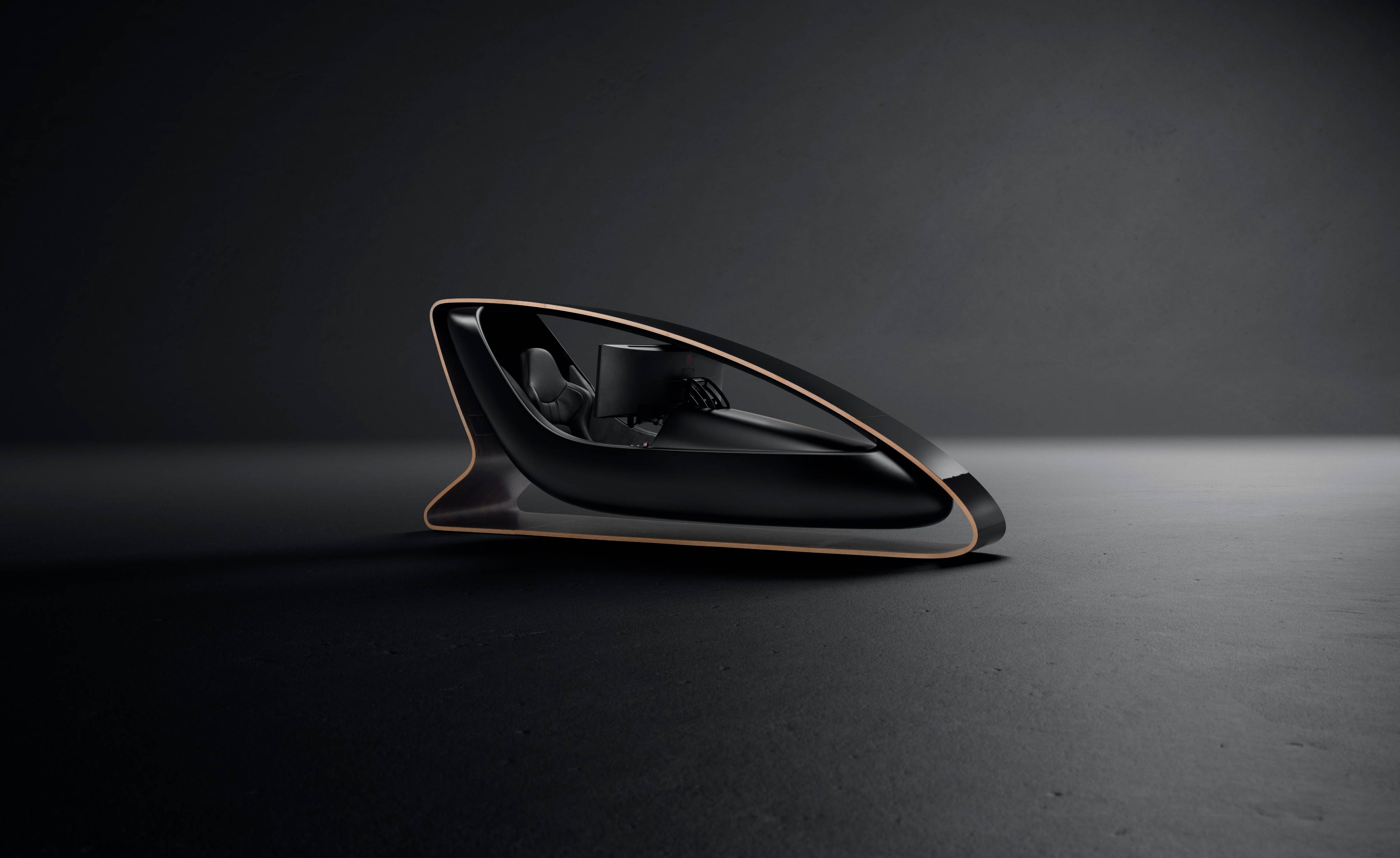 Prodrive’s new racing simulator is shaped by Callum to be front of the grid
Prodrive’s new racing simulator is shaped by Callum to be front of the gridThe racing simulator shapes up – this new design from Prodrive and Callum is honed for the high-end games room
-
 928 by Nardone Automotive: a restomod Porsche with Gallic verve and Italian style
928 by Nardone Automotive: a restomod Porsche with Gallic verve and Italian style928 by Nardone Automotive is a gracefully modernised version of Porsche’s endearingly different 928